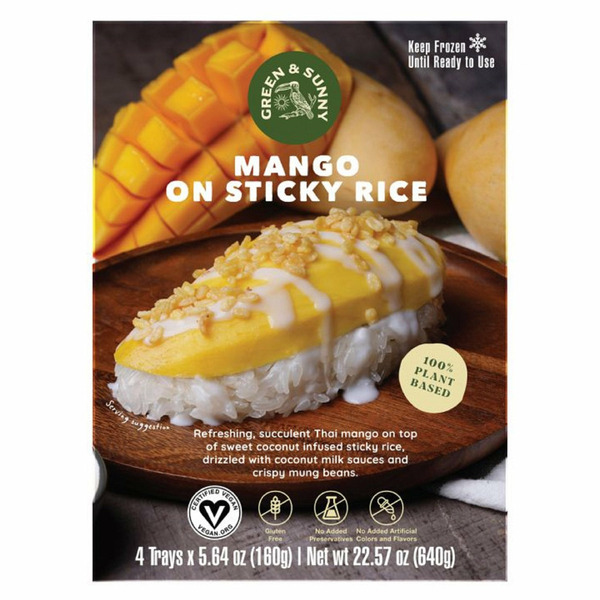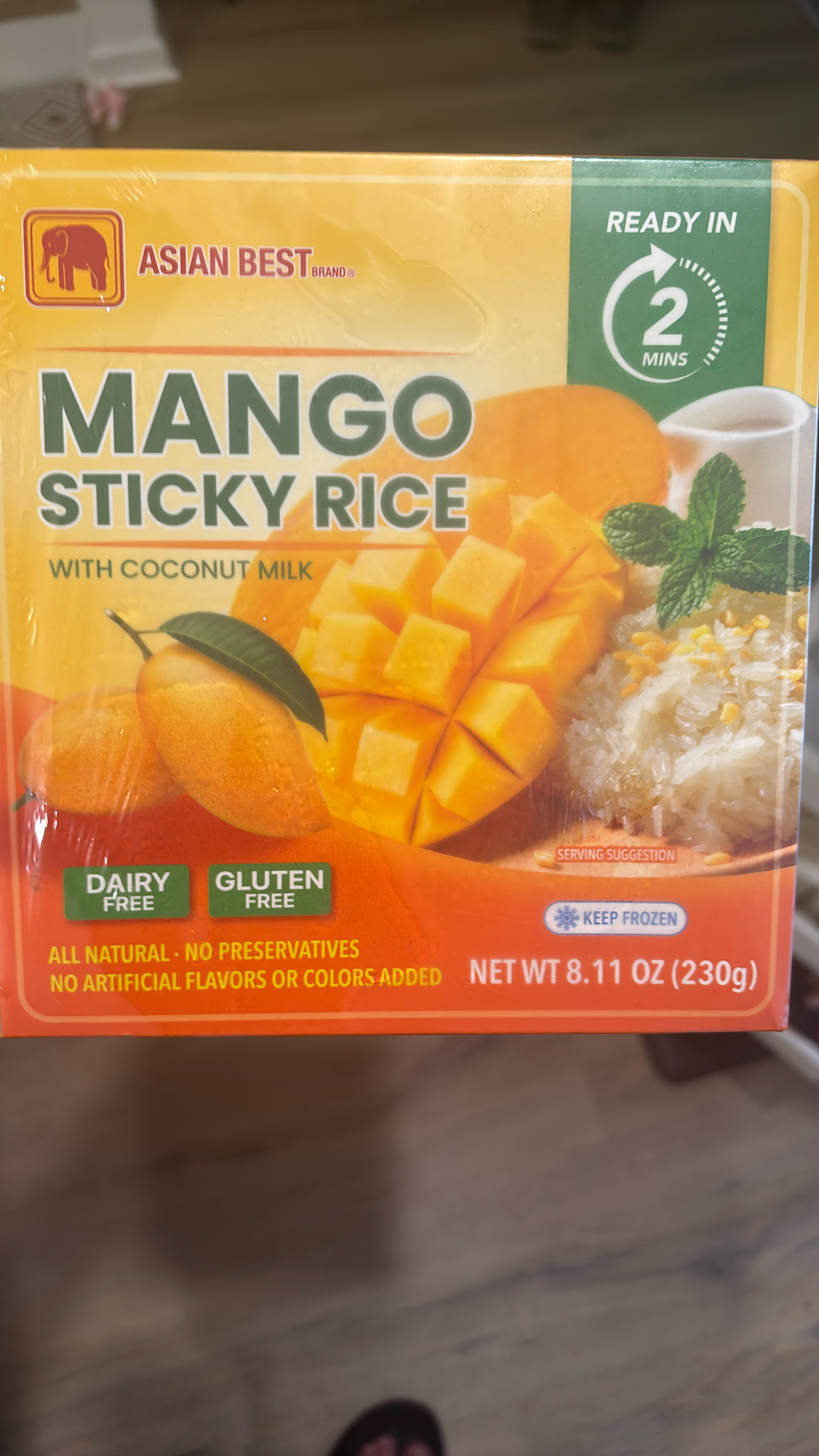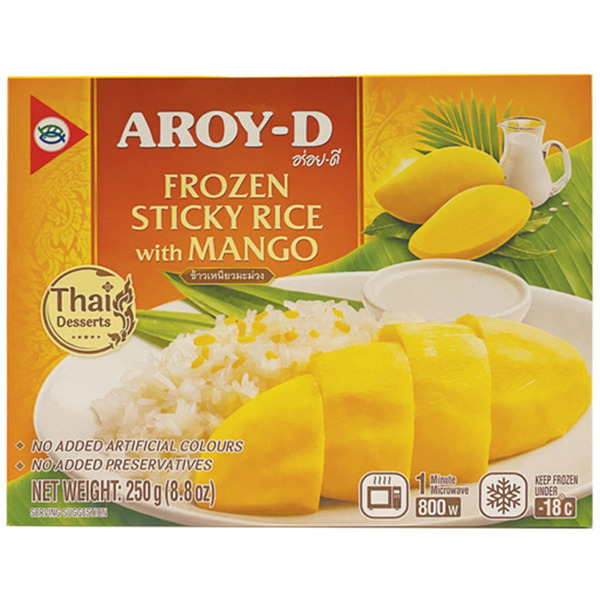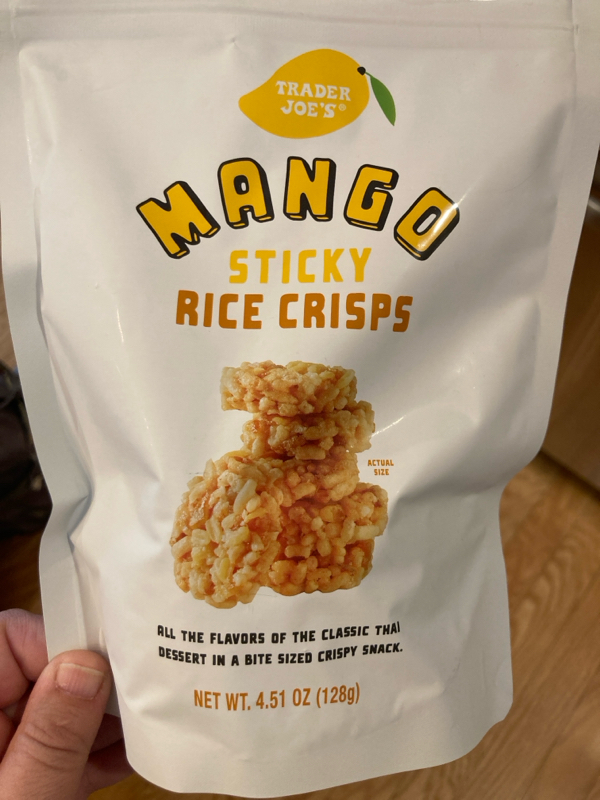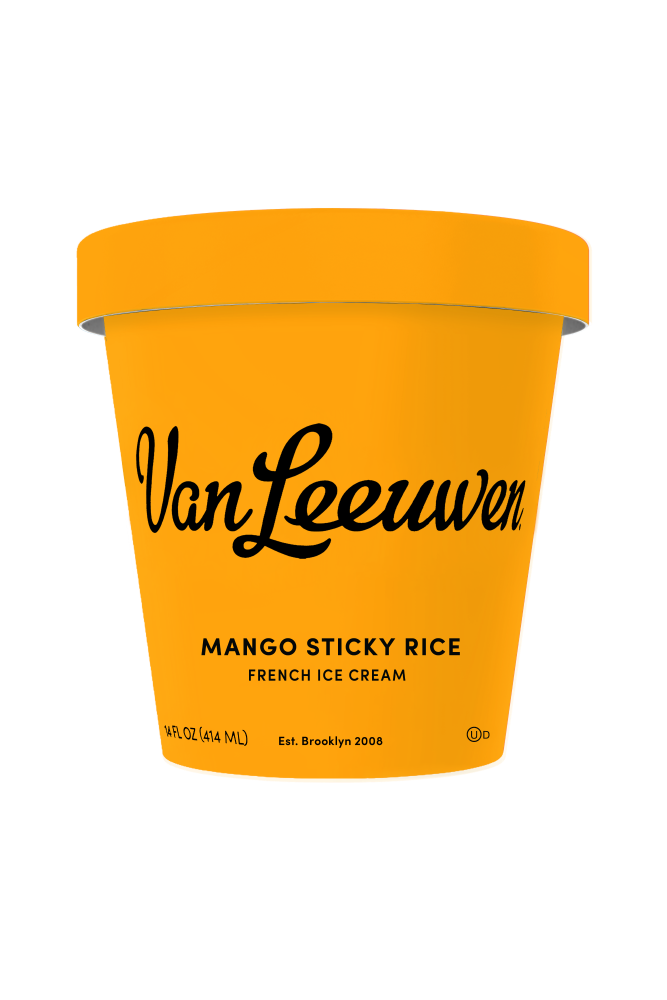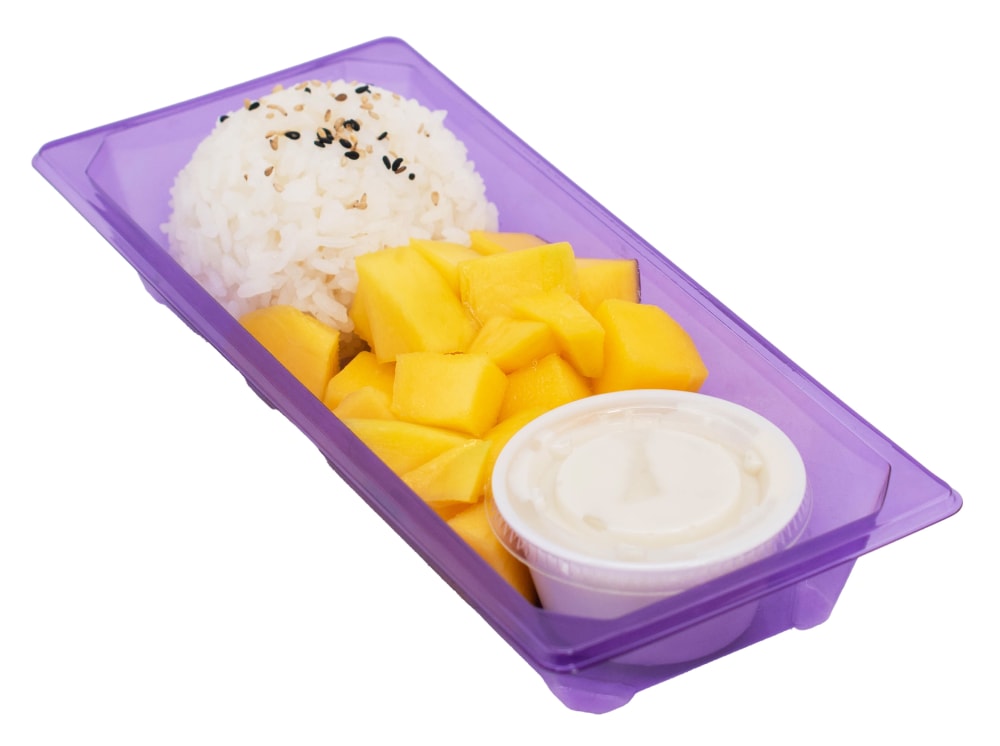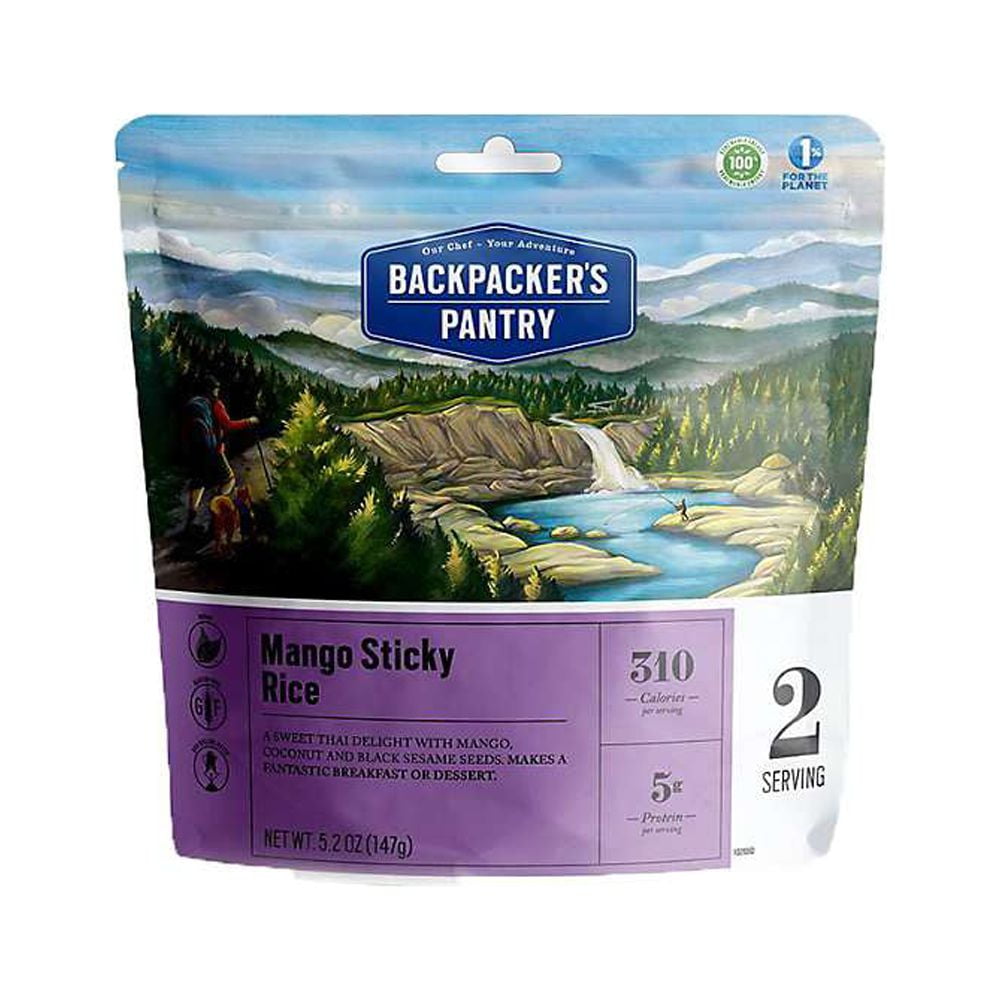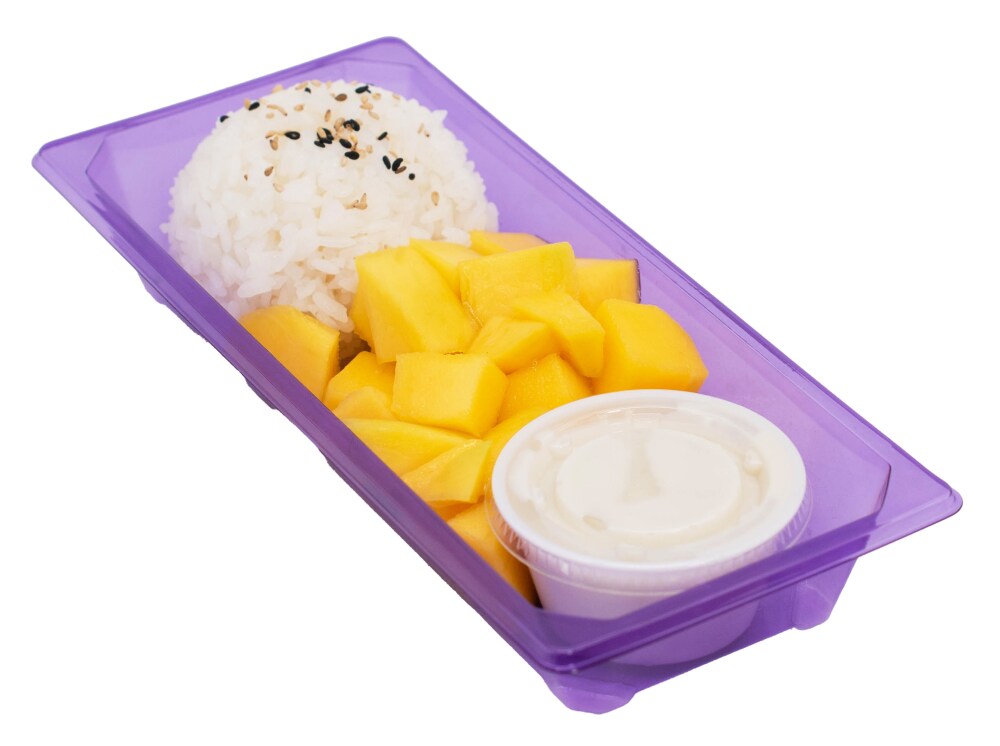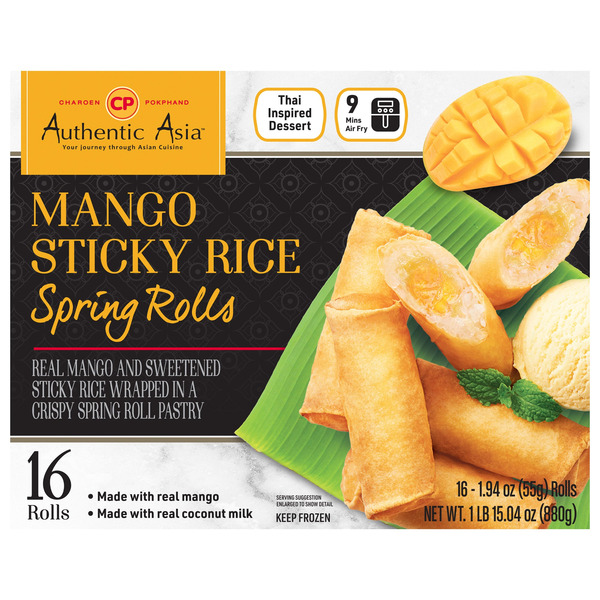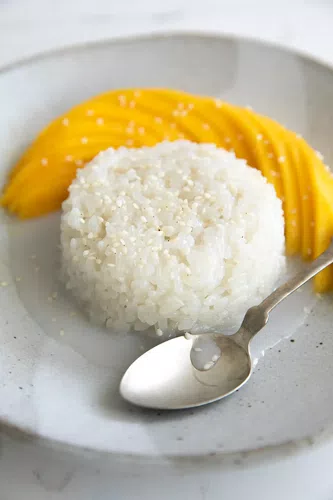Mango Sticky Rice
Mango sticky rice is a sumptuous dessert that combines the delightful sweetness of tropical Thai mango with creamy, fragrant sticky rice. A traditional dish in Thailand, it is known for its delicate balance of flavors and contrast of textures, making each bite a true gastronomic treat.
The preparation process of this delicacy involves soaking the sticky rice (glutinous rice) and then steaming it. The magic happens when it's mixed with the sweetened coconut milk, and served alongside ripe, juicy mango pieces. Heavenly refreshing and indulgently creamy, this dessert is perfect for those who prefer moderately sweet treats.
75%
CARBS
19%
FAT
6%
PROTEIN
13 Mango Sticky Rice Products
Green & Sunny Thai Mango on Sticky Rice
Mango Sticky Rice
Aroy-D Frozen Sticky Rice With Mango
Mango Sticky Rice Crisps
Van Leeuwen Mango Sticky Rice French Ice Cream
JFE Mango Sticky Rice
Backpacker's Pantry Mango Sticky Rice - Freeze Dried Backpacking & Camping Food - Emergency Food
ReadyWise® Adventure Meals Mango Sticky Rice Dessert
JFE 3PD Mango Stick Rice
Authentic Asia Mango Sticky Rice Spring Roll, 16-count
1 Recipe for Mango Sticky Rice
Mango Sticky Rice FAQ
Mango sticky rice is a popular Thai dessert known for its perfect combination of sweet, creamy, and tangy flavors. The sticky rice, also known as glutinous rice, is often the primary challenge for many as cooking it to the perfect consistency can be a bit tricky. Often, people handle the rice improperly, leading to the grains being too hard or too mushy.
To make the most out of this dessert, it's vital to select high-quality ingredients, especially ripe mangoes and good-quality coconut milk. The secret to a perfect mango sticky rice lies in the balance of sweetness and creaminess, hence, the coconut milk must be sweet but not overly sweet.
Another common mistake people make is not soaking the rice long enough. Soaking the rice for at least 4 hours, or better still overnight, allows it to absorb enough water, which helps the grains cook more evenly.
In addition, timing your cooking properly can result in a dish that has just the right texture. Overcooking leads to a mushy texture and an overly sweet taste, while undercooking leaves the rice hard and the sugar not fully dissolved.
One little-known trick is the use of pandan leaves to add a bit of a twist to the traditional dessert. It imparts a distinct aroma the rice enhancing its flavor. However, it's entirely optional.
How can I get my sticky rice dessert to be just sweet enough?
Can I use canned coconut milk for the sticky rice?
Can I prepare sticky rice without a steamer?
Why is my sticky rice too hard or too mushy?
What type of mangoes works best for sticky rice dessert?
Why is the flavor of my coconut sauce overpowering?
Is it necessary to use Thai glutinous rice?
How can I enhance the flavour of my mango sticky rice
Can I use jasmine rice instead of sticky rice?
Can I prepare mango sticky rice in advance?
Health Info
Macros
136g
CARBS
34g
FAT
11g
PROTEIN
Allowed on these diets
LOW FAT
HIGH CALCIUM
VEGETARIAN
VEGAN
LACTOSE FREE
GLUTEN FREE

